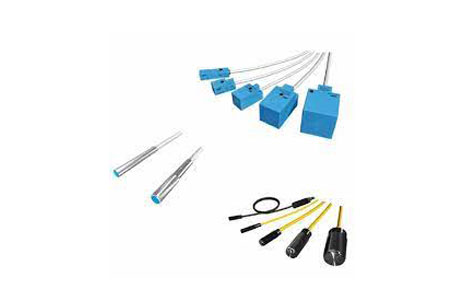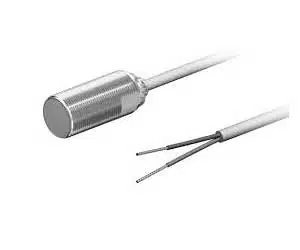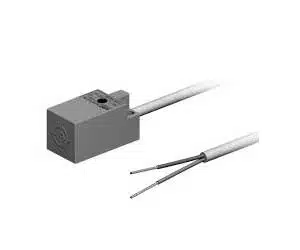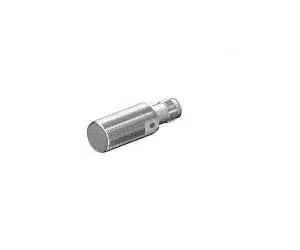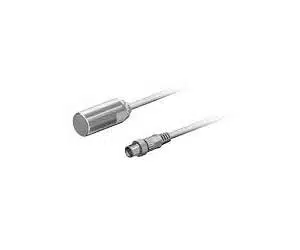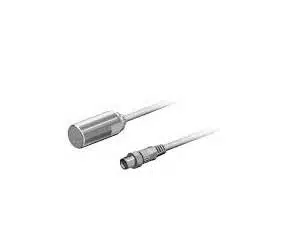Azbil Proximity Sensor: Azbil Proximity Switch
Azbil Proximity Sensor: The Future of Metal Detection
- Contactless detection of metal objects with Azbil proximity sensors
- Electromagnetic coupling used to detect eddy currents in metal targets
- A wide range of induction-based proximity switches are available
- Variety of shapes, sizes, and connection types to suit different applications
- Specialized models for challenging environments, including coolant-resistant, spatter-resistant, and aluminum-powder-resistant options.
FL7M-3W6HDT-CN03
- Sensing distance: 3 mm
- Size: M12
- Operating Mode: NO
- Supply Voltage: 12/24 VDC
- Operating Voltage Range: 10-30 VDC
- Connection: Cable Type
FL2R-4J6SD
- Type: Square
- Sensing distance: 4 mm
- Dimensions: 15x15x32
- Operating Mode: NO
- Electrical connection: Cable Type
FL7M-10J6D-CNA
- Type: Cylindrical
- Sensing distance: 10 mm
- Size: M30
- Operating Mode: NO
- Supply Voltage: 12/24 VDC
- Operating Voltage Range: 10-30 VDC
- Connection: Cable Type
FL7M-2K6H
- Type: Cylindrical
- Sensing distance: 2 mm
- Size: M8
- Operating Mode: NO
- Supply Voltage: 12/24 VDC
- Operating Voltage Range: 10-30 VDC
- Connection: Cable, 2m
FL7M-2J6HD-CN03
- Type: Cylindrical
- Sensing distance: 2 mm
- Size: M8
- Operating Mode: NO
- Supply Voltage: 12/24 VDC
- Operating Voltage Range: 10-30 VDC
- Connection: Cable, 2m
The Azbil Proximity Sensor offers a range of features designed for efficient and reliable detection of metal objects without physical contact. Utilizing electromagnetic methods, these sensors can accurately identify the presence of nearby metals. Azbil offers a variety of proximity switch types, including round, square, small, two-wire, and three-wire models, as well as those compatible with both AC and DC power sources. Specialized models are available that resist coolants, splashes, and metal dust, enhancing durability in challenging environments.
One of the key advantages of Azbil Proximity Sensors is their contactless operation, which eliminates wear and tear on the sensed object, thereby extending the life of your equipment. They offer a faster response time compared to traditional touch-based switches and perform reliably in environments with water or oil. These sensors are also unaffected by the color of the target object, ensuring consistent detection. With a wide range of models available, Azbil Proximity Switches cater to diverse industrial needs, providing an effective solution for various sensing applications.
Frequently Asked Questions
Where do Proximity Sensors Work?
A proximity sensor finds out how close an object is. It can tell if something is near or far. These sensors use things like magnets, electricity, or light to work. You find these sensors in many places. They are in cars, phones, and factories. In cars, they help with parking. In phones, they turn off the screen when you are on a call.
The sensor checks if an object is there or not. It can turn machines on or off based on this. For example, in factories, they can stop a machine if a hand gets too close. So, proximity sensors help keep things safe and efficient. They make sure objects are where they should be.
What are the Classification of Proximity Sensors?
Proximity sensors are classified into several types based on their sensing technology. These include inductive sensors for detecting metallic objects, capacitive sensors for sensing both metallic and non-metallic materials, and optical sensors using light for detection.
Magnetic sensors detect magnetic field changes, and IR sensors use infrared light for proximity sensing. Each type has unique applications and sensing capabilities.
Is Proximity Sensor Analog or Digital?
Proximity sensors can be either analog or digital, depending on their design and output signal. Analog inductive proximity sensors produce a continuous voltage or current output that varies proportionally with the distance of the object from the sensor.
This allows for precise measurement of object proximity. Digital proximity sensors, on the other hand, provide a discrete on/off output signal, indicating the presence or absence of an object without measuring distance. The choice between analog and digital depends on the specific application requirements.
Please share your Azbil Proximity Sensor Requirement to +91 79955 44066

